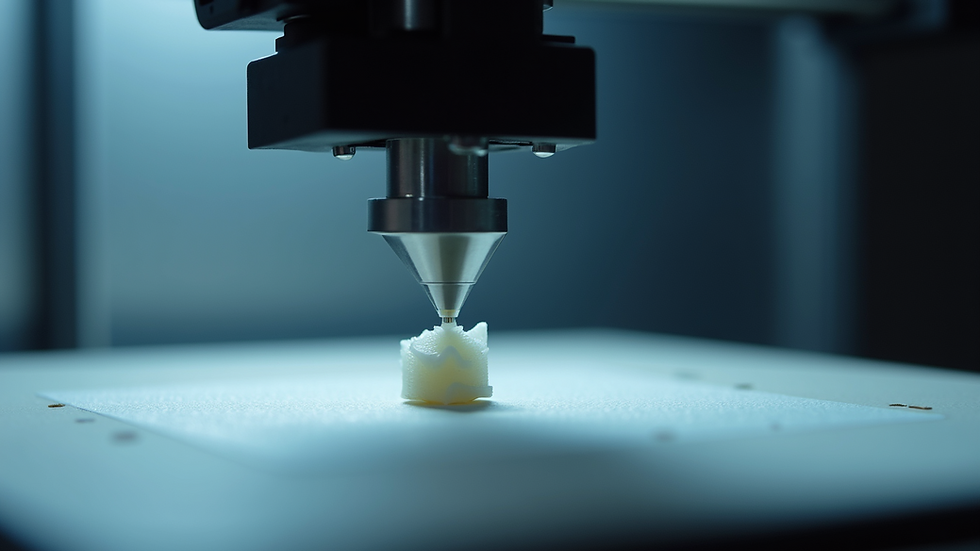Craft Stunning 3D Printing Models
- Craig Johnson

- Aug 2
- 3 min read
Creating eye-catching and functional 3D models is an exciting journey that combines creativity, technology, and precision. Whether you are a hobbyist or a professional, mastering the art of crafting creative 3D models can open up endless possibilities. This guide will walk you through essential tips and techniques to help you design impressive 3D prints that stand out.
Understanding the Basics of Creative 3D Models
Before diving into complex designs, it’s important to grasp the fundamentals of 3D modeling. Creative 3D models are digital representations of objects that can be printed using a 3D printer. These models are created using specialized software that allows you to sculpt, shape, and refine your ideas.
Choose the right software: Popular options include Blender, Tinkercad, and Fusion 360. Each has unique features suited for different skill levels.
Learn about file formats: STL and OBJ are the most common formats used for 3D printing.
Understand printer limitations: Knowing the build volume, resolution, and material compatibility of your 3D printer will help you design models that print successfully.
Starting with simple shapes and gradually adding complexity will build your confidence and skills.

Tips for Designing Creative 3D Models
Designing creative 3D models requires a blend of artistic vision and technical know-how. Here are some practical tips to enhance your design process:
Sketch your ideas first: Use paper or digital tools to outline your concept before modeling.
Focus on functionality: If your model has moving parts or needs to fit with other objects, precise measurements are crucial.
Use symmetry tools: Many software programs offer symmetry features that save time and ensure balance.
Incorporate textures and details: Adding surface textures can make your model more realistic and visually appealing.
Test with prototypes: Print small versions to check for errors and make adjustments.
By following these steps, you can create models that are both beautiful and practical.

Choosing the Right Materials for Your 3D Prints
Selecting the appropriate material is key to achieving the desired look and durability of your 3D printed models. Different materials offer various benefits depending on your project needs.
PLA (Polylactic Acid): Easy to print, biodegradable, and available in many colors. Ideal for decorative items.
ABS (Acrylonitrile Butadiene Styrene): Stronger and more heat-resistant, suitable for functional parts.
PETG (Polyethylene Terephthalate Glycol): Combines strength and flexibility, great for mechanical components.
Resin: Used in SLA printers for high-detail models with smooth finishes.
Consider the end use of your model when choosing materials. For example, a display piece might prioritize aesthetics, while a mechanical part needs strength and precision.

How to Optimize Your 3D Models for Printing
Even the most creative 3D models can fail if not optimized for printing. Here are some actionable recommendations to ensure your designs print smoothly:
Check for manifold errors: Your model should be watertight with no holes or gaps.
Avoid overhangs: Design with angles less than 45 degrees or add supports to prevent sagging.
Reduce complexity: Simplify meshes to lower file size without losing detail.
Consider layer height: Smaller layers improve detail but increase print time.
Use slicing software wisely: Programs like Cura or PrusaSlicer allow you to adjust settings for better results.
By optimizing your models, you reduce print failures and improve the quality of your final product.
Exploring Resources for 3D Printing Models
Finding inspiration and ready-to-print designs can accelerate your creative process. There are many online platforms where you can discover and download 3d printing models to customize or print directly.
Thingiverse: A vast library of free models shared by the community.
MyMiniFactory: Curated collections with quality checks.
Cults3D: Offers both free and paid designs with unique artistic styles.
Using these resources can help you learn new techniques and spark ideas for your own projects.
Elevate Your 3D Printing Experience
Mastering the craft of creative 3D models takes practice and patience. By understanding the basics, choosing the right tools and materials, optimizing your designs, and exploring available resources, you can create stunning 3D prints that impress and inspire. Keep experimenting, learning, and pushing the boundaries of what you can create with 3D printing technology.



Comments